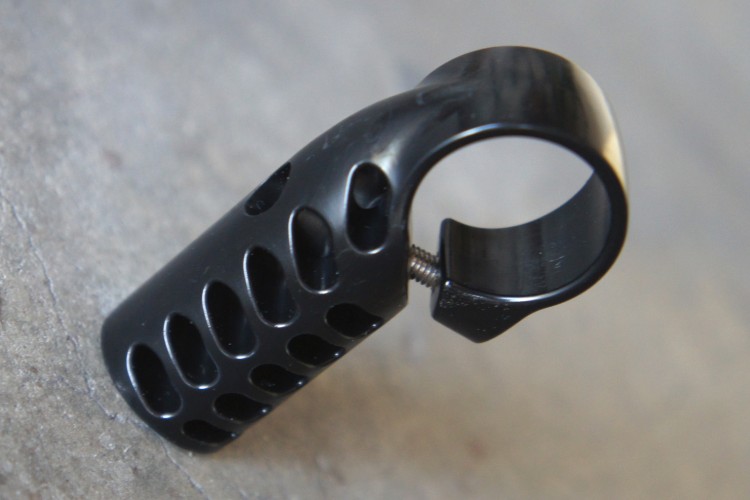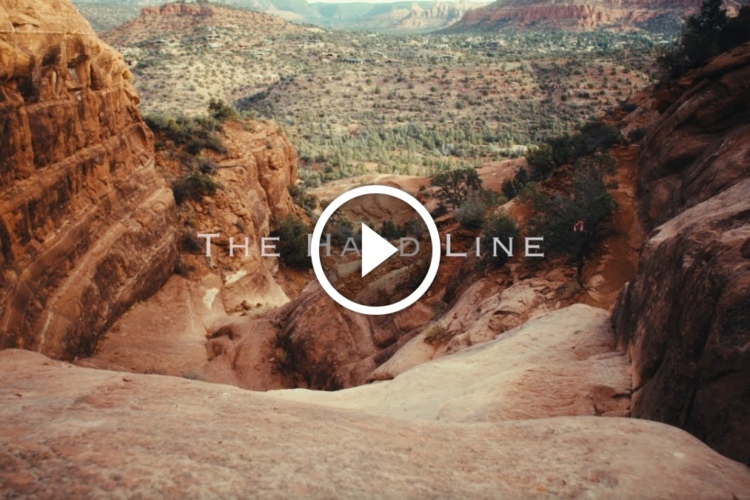
Forgive me, for I must confess that I committed a cardinal sin of bike travel. I swapped out a major component on my bike the day before leaving on my trip.
Changing cranks used to be a simple process, but it’s now a shit show thanks to our friend, the press fit bottom bracket. After mounting the new cranks up, it was apparent there wasn’t enough clearance between the arm and the non-driveside chainstay. Since I had mangled the original plastic bottom bracket when removing it from the frame, I was now in a jam. The new cranks didn’t fit and I didn’t have a BB for the old cranks. This is how I ended up taking one crank-less bike and a hardtail for backup to Snowshoe, hoping the shop there would have a press fit BB that would work.
Once at Snowshoe, I was getting ride advice from the Bike Park Manager, Philip Yates. He suggested a big backcountry loop in nearby Slatyfork since the lifts weren’t running at the bike park. He asked what bike I was riding and I told him I brought a hardtail. “Friends don’t let friends ride hardtails in Slatyfork,” was his reply. And with that, he lent me his brand-new 2017 Specialized Stumpjumper Expert Carbon 650B. Talk about friendly!
Specs

As one of the longest-running mountain bikes in existence, the Specialized Stumpjumper needs no introduction. The carbon Expert model that I rode is in the middle of the current Stumpjumper range with a price of $5,000. Below it is the Specialzied Comp Carbon at $4,000 along with the aluminum Comp at $2,900. Above it, you have the Specialized Pro Carbon at $6,500 and the S-Works model at $8,500. I rode the 27.5″-wheeled version–Specialized still insists on calling it 650B–but you can also get the Stumpy with 29″ wheels or plus wheels and tires, or 6Fattie in Spesh-speak.
The front triangle is carbon fiber paired with aluminum seat and chainstays. Like Specialized’s other carbon mountain bikes, the Expert features a SWAT door behind the water bottle cage. If you’re unfamiliar with the SWAT concept, it’s a removable trap door that allows you to put a tube, tools, a burrito, or maybe a ferret or two, into your downtube. It’s a handy way to always have your bike ready to rip without needing to cram tools in your jersey pockets or carry a pack.

Suspension travel is 150mm at both ends with a RockShox Monarch RT3 shock and Pike RC fork. The 1×11 drivetrain is a mix of SRAM GX and X1 bits, paired with RaceFace Aeffect cranks. The remaining components are largely from Specialized themselves: wheels from Roval, a Command Post dropper, Henge saddle, Butcher front tire, and a Slaughter rear tire. While the bike comes stock with Specialized-branded bars, stem, and grips, Philip had swapped these out for components from Chromag. Otherwise, the bike was stock.
Geometry
The Stumpjumper has always been Specialized’s do-it-all trail bike. As such, they haven’t gotten too carried away adding heaps of travel and making it overly long or slack. After all, if you want more length, slackness, travel, etc., there’s always the Enduro. A 67-degree head tube angle makes for a surefooted descender, and the 74-degree seat tube angle creates a comfortable pedaling position. The chainstays are about as short as you can get for a full suspension bike at 420mm (16.5″).
On the size large that I rode the reach was 442mm, which is fairly short by today’s standards for trail bikes. At 6′ tall, I felt slightly cramped on the frame. Considering my personal bike is almost an inch longer in reach, that’s not surprising.
The Ride

For my test ride, I rode a 25-mile backcountry loop in Slatyfork that epitomized East Coast riding–dense tree cover, lush undergrowth, moss-covered roots and rocks, steep climbs, and hairball descents.
Even though I had set the suspension up for my weight, within a few pedal strokes I was adding more pressure to the rear shock. With the shock fully open, the bike wallowed mid-travel and felt inefficient while climbing. After a couple air stops, I finally found a happy place with the shock. The bike felt nimble and I easily picked my way up greasy, technical climbs. It also felt just fine on the descents, but no matter how hard I tried, I couldn’t push the o-ring on the shock to its limits. There wasn’t just a little bit of travel left on the table either, we’re talking close to 15mm–or about half an inch–of the shock’s stroke going unused. That translates into lots of travel–a whopping 46mm–lost at the rear wheel. Again, the bike felt fine on the descents, but there’s no denying I was missing some squishing.

Early on in my ride, I had a couple of “oh shit!” moments as I was riding too far over the front wheel and nearly got ejected. Since my personal bike is longer and slacker, I’ve adjusted my riding style to have more of a front wheel bias. With the tighter Stumpjumper, I needed to center myself more. Once I leaned back just a touch, the front wheel and I got along much better.
Specialized has some great tires, but opting to spec the semi-slick Slaughter as a rear is a bit of a head-scratcher. Semi-slicks are great for racers in dry conditions, but it’s too specialized of a tread pattern for the vast majority of riders. Unless you live in the Southwest, you’re probably going to want something with bigger center knobs. The front Butcher tire was much more to my liking with its Minion-esque tread design. Throw one of these on the back too for a winning combination.

The trails were already saturated and sloppy when I began my ride, and about 10 miles in, it started to rain. When I finished the ride, there was enough mud and grass in the drivetrain to resod a front yard. Even so, the derailleur never skipped a beat or made any horrible noises. The brakes were quiet and powerful as well. Specialized’s Command Post performed well, but the 12 micro-adjust positions are overkill. My preference would be for an infinitely-adjustable model.

Final Thoughts

This was just a test ride so take it all with a grain of salt, but I did cover a variety of trail features and conditions over those 25 miles. I found the Specialized Stumpjumper to be an agile and snappy climber. Even with the semi-slick rear tire and wet roots, I was able to motor up the climbs as long as I was seated. While I felt confident on the descents, I can’t help but think what the bike would have been like if I could have used the full travel of the rear shock.
If I were seriously considering purchasing this bike, I would test ride the extra large as well, since my personal preference is for a roomier top tube, no matter how much travel the bike has. In addition, I would tinker further with the shock to make sure I was getting all the travel I was paying for.





















11 Comments
Jan 25, 2017
Jan 25, 2017
Jan 22, 2017
Also, I am considering buying the 2017 Stumpjumper Expert 29 and selling my current Stumpjumper. I have a large right now and I am happy with the size even when I rode it on black trails in Whistler. I am 6 feet tall and I ride aggressively. What is your opinion on trying the XL size?
Jan 23, 2017
I like a little bit longer bike, so trying the XL would be of interest to me. The reach on the XL is 22mm longer than the large, and is more in line with my personal bikes. The standover is only 2mm higher, so that shouldn't be a factor. But in the end, it comes down to personal preference. Some folks like a tighter bike.
Sep 2, 2016
I tested a 29er Stumpy, large, in a parking lot and also felt that that I would like a longer bike. I am just short of 6'.
Sep 2, 2016
Sep 6, 2016
There are definitely tires out there that offer more grip, but I found the Slaughter and Rock Razor to be pretty predictable. When they did break loose in a turn, the side knobs grabbed. I mostly rode in rockier terrain (central Montana) but now that I'm in Michigan they're still working well.
I do agree they're not exactly an "all-rounder" but I wouldn't label them incapable.
Sep 6, 2016
Sep 6, 2016
Sep 5, 2016
Oct 13, 2016